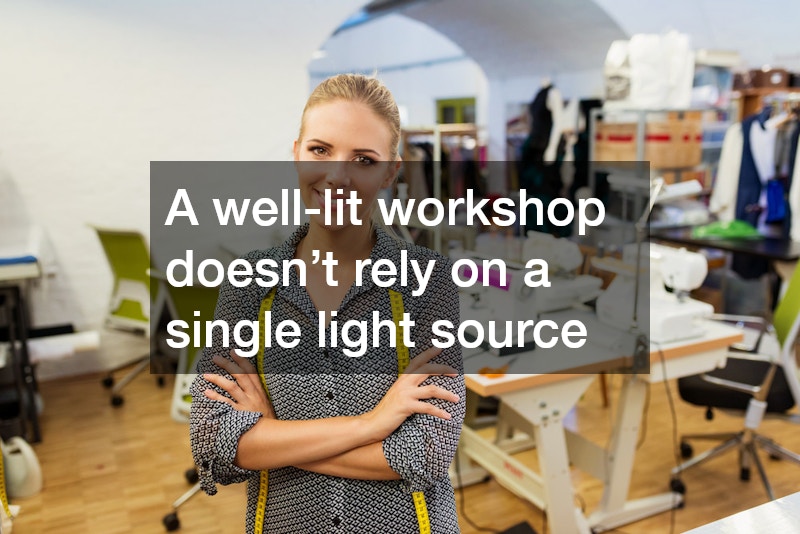Whether you use your garage, shed, or home workshop for DIY projects, woodworking, or simple repairs, having the right lighting can make a world of difference. Poor lighting can strain your eyes, reduce accuracy, and even pose safety risks when working with tools. But with so many lighting options available, how do you choose the best solution for your workspace? This guide will help you understand the types of lighting that work best in workshops and how to shop for the right fixtures at lighting stores.
Understanding Your Workshop’s Lighting Needs
Before purchasing any fixtures, it’s important to assess the type of work you’ll be doing in your workshop. General tasks, like organizing tools or cleaning, require ambient lighting—soft, overall illumination that ensures you can see the space clearly.
Meanwhile, task-specific activities, such as detailed woodworking, electrical work, or painting, require brighter, more focused lighting to reduce shadows and improve visibility. Finally, accent lighting can be used strategically to highlight particular areas or tools for convenience and safety.
Many homeowners underestimate the difference between general and task lighting. Visiting local lighting stores can help you see firsthand the options available for both types of illumination. Staff at these stores often provide advice tailored to your specific workspace layout and activities.
Choosing the Right Fixture Types
Several lighting fixtures are suitable for workshops. Overhead fluorescent or LED panels are popular for providing broad, uniform illumination across the room. LEDs, in particular, are energy-efficient and long-lasting, making them a cost-effective choice in the long run. For workbenches or specialized zones, consider adjustable task lights, such as clamp-on or articulated arm lamps. These allow you to direct light exactly where you need it, minimizing shadows and improving precision.
Pendant lights can be installed above central work areas, offering concentrated light and adding a stylish touch to your workshop. Additionally, under-cabinet or shelf lighting can illuminate storage areas, helping you locate tools and materials quickly. Homeowners often find it helpful to consult lighting stores to compare brightness levels, color temperatures, and fixture sizes to ensure they meet their needs.
Consider Brightness and Color Temperature
When it comes to workshop lighting, brightness and color temperature are crucial. Brightness is measured in lumens, and a higher lumen count ensures your workspace is well-lit. For most workshops, a combination of 3,000 to 5,000 lumens is recommended, depending on the size of the room and the level of detail required in your tasks.
Color temperature, measured in Kelvin (K), affects how “warm” or “cool” your light appears. Warm lighting (around 2,700–3,000 K) creates a cozy atmosphere, while cool lighting (4,000–6,500 K) mimics daylight, enhancing contrast and helping you see fine details. Many lighting stores carry bulbs and fixtures with adjustable color temperatures, giving you the flexibility to switch between warmer and cooler light based on your current project.
Layering Your Lighting for Maximum Effect
A well-lit workshop doesn’t rely on a single light source. Layering different types of lighting creates a balanced, functional environment. Start with general ambient lighting using ceiling-mounted fixtures, then add task lighting for workbenches, and finish with accent lighting for storage areas or specific zones.
Using multiple light sources also reduces harsh shadows, which can be dangerous when operating machinery. Homeowners can experiment with different setups by consulting lighting stores, where they can see lighting samples in action. This hands-on experience often helps you decide which combination works best for your unique space.
Safety and Energy Efficiency Considerations
Safety should always be a top priority in workshop lighting. Proper illumination reduces the risk of accidents when handling power tools or sharp objects. Avoid exposed bulbs or dangling cords, and make sure fixtures are securely mounted.
Energy efficiency is another factor to consider. LEDs consume less power and last longer than traditional incandescent or fluorescent bulbs, saving money on electricity bills and reducing maintenance. Many lighting stores now offer a wide range of LED solutions specifically designed for workshops, combining efficiency, brightness, and durability in one package.
Choosing the right lighting for your garage, shed, or home workshop enhances both productivity and safety. By understanding your workspace needs, selecting the appropriate fixtures, considering brightness and color temperature, layering lighting effectively, and prioritizing safety and energy efficiency, you can create an environment that supports every project, big or small.
For homeowners unsure where to start, visiting lighting stores is a practical step. You can see different options in person, get expert advice, and find fixtures tailored to your specific needs. With the right lighting setup, your workshop can become a bright, efficient, and enjoyable place to work for years to come.




